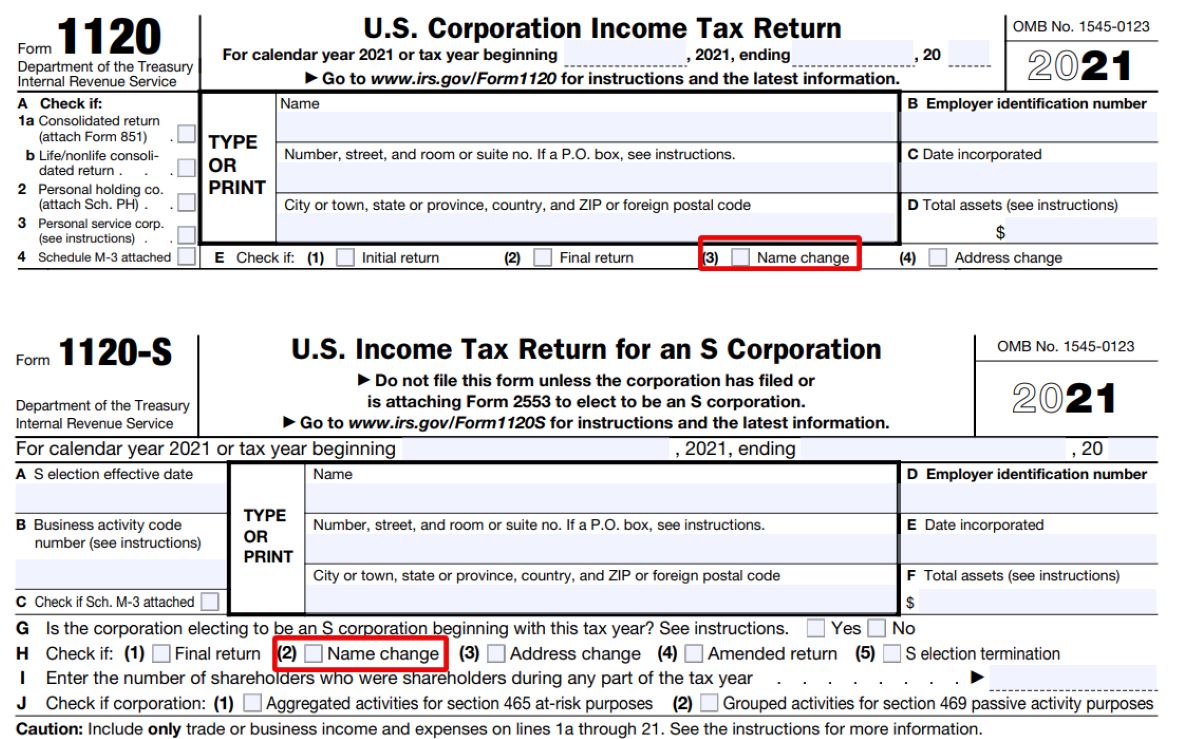

Finance
What Is Turnover Rate In Mutual Funds
Modified: December 30, 2023
Learn about the turnover rate in mutual funds and how it impacts your finances. Find out why understanding this key metric is essential for investment success.
(Many of the links in this article redirect to a specific reviewed product. Your purchase of these products through affiliate links helps to generate commission for LiveWell, at no extra cost. Learn more)
Table of Contents
Introduction
In the world of finance, mutual funds are a popular investment option for individuals looking to diversify their portfolios and potentially earn attractive returns. When evaluating the performance of a mutual fund, one crucial factor to consider is its turnover rate. The turnover rate of a mutual fund is a metric that measures the frequency at which the fund’s portfolio holdings are bought and sold within a specific period. It is expressed as a percentage and signifies the level of activity within the fund.
The turnover rate acts as a window into how actively the fund’s management team is trading the underlying assets. A higher turnover rate suggests that the fund’s holdings are being traded frequently, whereas a lower turnover rate implies a more passive approach to managing the portfolio. The turnover rate is an essential indicator for investors to understand as it impacts the overall performance, costs, and tax implications of investing in a mutual fund.
In this article, we will delve into the definition of turnover rate and its significance in the realm of mutual funds. We will also explore how turnover rate is calculated, factors that influence it, and the implications of a high turnover rate on mutual fund performance. Additionally, we will discuss strategies that fund managers employ to manage turnover effectively. By the end, you will have a clear understanding of the importance of turnover rate in assessing the potential risks and rewards of investing in mutual funds.
Definition of Turnover Rate
Turnover rate in the context of mutual funds refers to the ratio of securities bought and sold within a particular time period. It is a measure of the level of trading activity within the fund. The turnover rate is typically expressed as a percentage and is calculated by dividing the total value of securities bought or sold (whichever is higher) by the average net asset value (NAV) of the fund.
To illustrate, let’s consider an example. Suppose a mutual fund has total buy transactions of $100 million and sell transactions of $80 million during a year. The average net asset value (NAV) of the fund is $500 million. To calculate the turnover rate, we divide the total value of transactions ($100 million + $80 million = $180 million) by the average NAV ($500 million). The resulting turnover rate is 36%.
Turnover rate serves as a measure of the fund’s trading activity and reflects how frequently the fund’s portfolio is being bought and sold. It provides investors with insights into the level of engagement and decision-making of the fund manager. A higher turnover rate implies a more active management approach, where the fund’s holdings are frequently adjusted based on market conditions and investment strategies. Conversely, a lower turnover rate suggests a more passive or buy-and-hold investment approach.
It is important to note that turnover rate can vary widely across different mutual funds. Some funds may have annual turnover rates as low as 10%, while others may have rates exceeding 100%. The level of turnover rate chosen by the fund manager depends on various factors, including investment objectives, risk tolerance, and market conditions.
In the next section, we will discuss why turnover rate is an essential metric to consider when evaluating mutual funds.
Importance of Turnover Rate in Mutual Funds
The turnover rate of a mutual fund plays a crucial role in assessing its overall performance and can have significant implications for investors. Understanding the importance of turnover rate is key to making informed investment decisions. Here are some reasons why turnover rate is an essential metric to consider when evaluating mutual funds:
- Portfolio Activity: The turnover rate provides insights into the level of trading activity within a mutual fund. A higher turnover rate indicates more active management, with the fund manager making frequent buy and sell decisions based on market conditions and investment strategies. On the other hand, a lower turnover rate suggests a more passive approach, with the fund manager holding onto assets for more extended periods. Knowing the level of portfolio activity can help investors align their investment goals and risk tolerance with the fund’s management style.
- Costs and Expense Ratios: Turnover rate can impact the costs associated with investing in a mutual fund. Higher turnover rates typically result in increased transaction costs, including commissions and bid-ask spreads, which can erode returns over time. Additionally, actively managed funds with high turnover rates tend to have higher expense ratios compared to passively managed funds. These higher expenses can impact the overall returns generated by the fund.
- Tax Implications: The turnover rate of a fund has implications for the taxation of the fund’s investors. When a mutual fund realizes gains from selling securities within its portfolio, it may distribute these gains to shareholders, resulting in taxable capital gains. Funds with high turnover rates are more likely to generate taxable capital gains, potentially triggering tax liabilities for investors. In contrast, funds with lower turnover rates are generally more tax-efficient, as they may generate fewer taxable events.
- Performance Evaluation: Turnover rate can be an important factor in evaluating the historical performance of a mutual fund. It can indicate how effectively the fund manager has implemented their investment strategies and executed trading decisions. However, it is essential to consider turnover rate in conjunction with other performance metrics, such as risk-adjusted returns, to gain a comprehensive understanding of the fund’s performance.
By considering the turnover rate of a mutual fund, investors can assess how well the fund aligns with their investment objectives, risk tolerance, and tax planning strategies. It is crucial to keep in mind that turnover rate should not be evaluated in isolation but should be considered alongside other factors when making investment decisions.
Now that we understand the importance of turnover rate, let’s explore how it is calculated in the next section.
Calculation of Turnover Rate
The turnover rate of a mutual fund is calculated by dividing the total value of securities bought or sold within a specific period by the average net asset value (NAV) of the fund. This calculation provides investors with a percentage that represents the level of trading activity within the fund. Here’s how the turnover rate is calculated:
- Total Value of Securities Bought and Sold: To calculate the turnover rate, start by determining the total value of securities bought and sold by the mutual fund during a specific time period. This includes both buying and selling transactions of stocks, bonds, and other assets made by the fund’s management team.
- Average Net Asset Value (NAV): Next, determine the average net asset value (NAV) of the mutual fund. The NAV is the total value of the fund’s assets minus its liabilities. To calculate the average NAV, add the daily NAVs for the specific time period and divide the sum by the number of days in that period.
- Turnover Rate Calculation: Divide the total value of securities bought and sold by the average NAV of the fund. Multiply the result by 100 to express the turnover rate as a percentage. The formula for calculating the turnover rate is as follows:
Turnover Rate = (Total Value of Securities Bought and Sold / Average NAV) x 100
- Example Calculation: Let’s say a mutual fund had total buy transactions of $50 million and sell transactions of $30 million during a year. The average net asset value (NAV) of the fund for that year was $500 million. Using the formula above, the turnover rate would be calculated as follows:
Turnover Rate = (($50 million + $30 million) / $500 million) x 100 = 16%
The turnover rate provides investors with a valuable measure of the level of trading activity within a mutual fund. It helps in assessing how frequently the fund’s portfolio holdings are being bought and sold, indicating the level of engagement and decision-making of the fund manager. Understanding the calculation of turnover rate allows investors to evaluate the trading activity of a mutual fund and make informed investment decisions.
Next, we will discuss the factors that can influence the turnover rate of a mutual fund.
Factors Affecting Turnover Rate
The turnover rate of a mutual fund can vary depending on several factors that influence the fund’s trading activity. Understanding these factors is crucial for investors to evaluate the potential risks and rewards associated with investing in a mutual fund. Here are some key factors that can affect the turnover rate:
- Investment Strategy: The investment strategy employed by the mutual fund plays a significant role in determining its turnover rate. Different strategies, such as active management or passive indexing, have varying levels of trading activity. Active management strategies, which aim to outperform the market through frequent buying and selling of securities, tend to have higher turnover rates. On the other hand, passive strategies, like index funds, typically have lower turnover rates as they seek to replicate the performance of a specific market index.
- Market Volatility: Market dynamics heavily influence the turnover rate of a mutual fund. In periods of high market volatility, fund managers may feel the need to adjust their positions more frequently to capitalize on potential opportunities or mitigate risks. This can lead to increased turnover rates. Conversely, during periods of stability, turnover rates may be lower as there is less need for frequent portfolio adjustments.
- Investment Mandate: The investment mandate or objective of the mutual fund can also impact its turnover rate. For example, funds with a focus on a specific sector or geography may have higher turnover rates as they actively shift holdings to capitalize on market trends or changes in the economic landscape. In contrast, funds with a broader investment mandate may have lower turnover rates, as they aim for longer-term investments.
- Fund Size: The size of a mutual fund can influence its turnover rate. Larger funds may find it more challenging to take significant positions in individual securities without impacting the market. As a result, they may need to trade more frequently to achieve desired portfolio allocation. Smaller funds, on the other hand, may have more flexibility in taking larger positions and may have lower turnover rates.
- Manager Philosophy and Expertise: The philosophy and expertise of the fund manager can also contribute to the turnover rate. Some fund managers have a more active investment approach and believe in capitalizing on short-term market movements. Others may adopt a more long-term, buy-and-hold strategy. The investment style and experience of the fund manager can influence the decision to buy or sell securities, thereby impacting the fund’s turnover rate.
It’s important to note that different mutual funds may have varying turnover rates depending on their specific circumstances. There is no universally optimal turnover rate, as it depends on factors such as the fund’s investment objective, risk tolerance, and management style. As an investor, understanding these factors allows you to evaluate the appropriateness of a mutual fund’s turnover rate based on your own investment goals and preferences.
Now that we have explored the factors affecting turnover rate, let’s discuss the implications of a high turnover rate in the next section.
Implications of High Turnover Rate
A high turnover rate in a mutual fund can have several implications for investors. While a high turnover rate may not necessarily be negative in all cases, it is important to understand the potential implications before investing. Here are some key implications of a high turnover rate in a mutual fund:
- Increased Trading Costs: A high turnover rate typically leads to increased trading activity within the fund. This can result in higher transaction costs, including brokerage fees, spreads, and other expenses related to buying and selling securities. These costs can erode the overall returns of the fund, making it more challenging for investors to achieve their desired investment goals.
- Tax Consequences: High turnover rates can have tax consequences for mutual fund investors. When a mutual fund realizes capital gains from selling securities within its portfolio, it must distribute those gains to shareholders. These distributions are subject to taxation, potentially resulting in a higher tax liability for investors. Additionally, frequent trading can lead to shorter holding periods, which may result in higher taxes on short-term capital gains compared to long-term capital gains.
- Difficulty in Outperforming the Market: Constant buying and selling of securities can make it more challenging for a fund to outperform the market. High turnover rates implies that the fund has to consistently make accurate investment decisions to generate substantial returns that offset the associated costs. Research has shown that a significant percentage of actively managed funds underperform their benchmarks over the long term. While high turnover rates may not be the sole reason for underperformance, they can contribute to lower net returns for investors.
- Higher Risk Levels: A high turnover rate can indicate a higher degree of risk within the mutual fund. Frequent trading can lead to increased portfolio turnover and potential exposure to short-term market fluctuations. While active management strategies aim to generate higher returns, they can also introduce higher risk levels. Investors should carefully assess whether the potential benefits of higher returns outweigh the associated risks.
- Limited Tax Efficiency: Funds with high turnover rates are generally less tax-efficient compared to those with lower turnover rates. The frequent realization of capital gains can result in higher tax liabilities for investors, limiting the tax efficiency of the investment. Investors seeking tax-efficient investments may prefer funds with lower turnover rates.
It is important to note that while a high turnover rate may have these implications, it does not automatically mean that a mutual fund is unsuitable for investment. Some strategies, such as active management, may warrant a higher turnover rate depending on the fund’s investment objective and approach. However, investors should carefully consider the potential implications and align them with their own investment goals, risk tolerance, and tax planning strategies.
In the next section, we will discuss the impact of turnover rate on mutual fund performance, shedding light on how it can influence investment outcomes.
Impact of Turnover Rate on Mutual Fund Performance
The turnover rate of a mutual fund can have a significant impact on its performance. The level of trading activity within a fund can affect various aspects of its performance, including returns, risk, and costs. Understanding the impact of turnover rate is crucial for investors seeking to evaluate the potential outcomes of investing in a particular mutual fund. Here are some key points to consider:
1. Returns: The impact of turnover rate on returns can be complex. On one hand, active management and a higher turnover rate can provide opportunities to capture short-term market movements and generate potentially higher returns. Skilled fund managers may be able to identify buying and selling opportunities that result in outperformance. On the other hand, frequent trading and associated transaction costs can erode returns, especially in cases where the benefits of active management do not outweigh the costs. It is important to consider the historical performance of a fund in conjunction with its turnover rate to assess if the strategy has been consistently delivering favorable returns.
2. Risk: High turnover rates within a mutual fund can introduce higher levels of risk. More frequent trading increases the potential exposure to short-term market fluctuations, which may result in increased volatility. It is crucial for investors to evaluate the fund’s risk tolerance and align it with their own risk appetite. While higher levels of risk can potentially lead to higher returns, they can also result in significant losses if market conditions are unfavorable or trading decisions are incorrect.
3. Costs: Turnover rate impacts the costs associated with investing in a mutual fund. High turnover rates can lead to increased transaction costs such as brokerage fees, bid-ask spreads, and other expenses related to trading. These costs can reduce the overall returns of the fund and may have a substantial impact on long-term investment outcomes. Investors should assess the trade-off between higher turnover rates and the potential benefits of active management in terms of generating alpha.
4. Consistency: A high turnover rate may affect the consistency of a mutual fund’s performance. Frequent trading can result in frequent changes to the fund’s holdings, potentially leading to inconsistent results. Investors seeking stable and predictable performance may prefer funds with lower turnover rates, which typically have a more buy-and-hold approach to investing.
It’s important to note that the impact of turnover rate on mutual fund performance can vary based on various factors, such as the fund’s investment strategy, market conditions, and the skill and experience of the fund manager. Therefore, it is essential to conduct thorough research, assess historical performance, and consider the fund’s overall investment approach when evaluating the impact of turnover rate on its performance.
In the next section, we will discuss strategies that mutual fund managers employ to manage turnover effectively.
Strategies for Managing Turnover Rate
Mutual fund managers employ various strategies to effectively manage the turnover rate of their funds. These strategies aim to balance the trading activity required to meet investment objectives with the potential costs and risks associated with frequent buying and selling. Here are some common strategies used for managing turnover rate:
- Long-Term Investment Approach: Adopting a long-term investment approach can help reduce turnover rate. Rather than attempting to time the market and make frequent trades, fund managers focus on selecting quality investments that align with their investment theses and hold them for longer periods. This approach can reduce transaction costs and minimize the potential impact of short-term market fluctuations.
- Passive Indexing: Passive index funds aim to replicate the performance of a specific market index rather than actively selecting individual securities. These funds typically have lower turnover rates as they align their portfolio with the index constituents and only make changes when there are updates to the index. This strategy helps to reduce transaction costs and can lead to more tax-efficient investing.
- Bottom-Up Stock Selection: Fund managers may focus on bottom-up stock selection, where they carefully analyze individual companies before making investment decisions. By conducting in-depth research and selecting high-quality stocks, fund managers can build a portfolio with a longer holding period. This approach reduces the need for frequent trading and can result in a lower turnover rate.
- Tactical Asset Allocation: Tactical asset allocation involves adjusting the allocation of assets based on short-term market conditions and outlook. Rather than making frequent trades within the portfolio, this strategy involves making strategic shifts in asset allocation to take advantage of emerging opportunities or mitigate risks. It allows fund managers to make targeted adjustments without excessively disrupting the portfolio and necessitating high turnover.
- Quantitative Models: Some funds employ sophisticated quantitative models and algorithms to guide their trading decisions. These models consider various factors and indicators to determine when to buy or sell securities. By relying on data-driven decision-making, fund managers can reduce emotional biases and potential overtrading by following predefined rules and criteria.
When evaluating mutual funds, it is important for investors to consider the management strategies employed to manage turnover rate. Understanding the fund’s approach to trading activity and the potential benefits and risks associated with different strategies can help investors align their investment goals and risk tolerance with the fund’s management style.
Before investing, investors should carefully review the fund’s prospectus, which provides insights into the fund’s investment process, turnover rate, and strategy. By conducting thorough due diligence and understanding the fund’s turnover management strategies, investors can make more informed decisions and choose funds that best suit their investment objectives and preferences.
In the final section, we will conclude our exploration of turnover rate in mutual funds.
Conclusion
The turnover rate is a significant metric to consider when evaluating mutual funds. It provides insights into the level of trading activity within a fund, reflecting the fund manager’s engagement and decision-making. Understanding the implications of turnover rate is crucial for investors seeking to make informed investment decisions aligned with their goals and preferences.
A high turnover rate can impact a mutual fund’s performance, costs, tax consequences, and risk levels. Frequent trading can lead to increased transaction costs, potentially eroding returns and limiting tax efficiency. It can also introduce greater risk and make it more challenging for the fund to outperform the market consistently. However, a high turnover rate is not necessarily negative, as active management strategies may aim to capture short-term market opportunities and generate higher returns.
The management strategies employed by mutual fund managers play a vital role in managing turnover rate. Approaches such as long-term investing, passive indexing, bottom-up stock selection, tactical asset allocation, and quantitative models help strike a balance between trading activity and investment objectives. Investors should evaluate the fund’s management style and turnover management strategies to assess their suitability in achieving their investment goals.
It is essential for investors to consider turnover rate in conjunction with other performance metrics, risk factors, and costs when evaluating mutual funds. By conducting thorough research, assessing historical performance, and aligning investment objectives with the fund’s turnover rate, investors can make well-informed decisions that align with their financial goals and risk appetite.
In conclusion, the turnover rate serves as a critical factor in evaluating mutual funds. By understanding its calculation, implications, and impact on performance, investors can navigate the world of mutual fund investing with greater confidence and make choices that best suit their investment needs.














